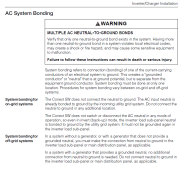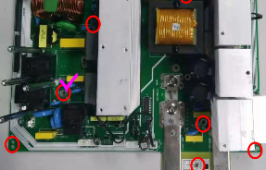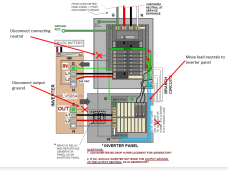Just picked up an MppSolar LV6048 and noticed that they bond the output neutral to ground! Not clear why. If your split phase input is from a panel where ground and neutral are bonded, which is always the case if the panel is the first disconnect after the meter, you would like to preserve that original bond and not bond again downstream. When the 6048 is in grid pass-through mode, if it's wired to a subpanel with unbounded ground and neutral as it should be, you would like your main panel to be the only source of neutral-ground bonding, per Code.
For inverter mode, the neutral-ground bond at the output is ok. So if you're off-grid completely - with no grid connect for back up, you'd be good to go. But when using the grid for back up, the neutral-ground bond after the main panel NG bond is a safety concern. Also likely to make the ground a current carrying conductor, as opposed to a purely fault clearance conductor that's energized only when a hot conductor shorts out.
Quick Qs:
1. Anyone own a 6048 tied to the grid off a main breaker panel? If so, have you tried clamping the ground wire to scope out potential current on the line?
2. Anyone know if there's some kind of mode dependent switching inside the 6048 that opens and closes the neutral-ground bond?
Maybe I'm missing something obvious, and this is a non-issue. Maybe measuring a dead short with the unit off is misleading. I did read through a thread on one of the Growatts having this problem, but did not see any simple solutions.
For inverter mode, the neutral-ground bond at the output is ok. So if you're off-grid completely - with no grid connect for back up, you'd be good to go. But when using the grid for back up, the neutral-ground bond after the main panel NG bond is a safety concern. Also likely to make the ground a current carrying conductor, as opposed to a purely fault clearance conductor that's energized only when a hot conductor shorts out.
Quick Qs:
1. Anyone own a 6048 tied to the grid off a main breaker panel? If so, have you tried clamping the ground wire to scope out potential current on the line?
2. Anyone know if there's some kind of mode dependent switching inside the 6048 that opens and closes the neutral-ground bond?
Maybe I'm missing something obvious, and this is a non-issue. Maybe measuring a dead short with the unit off is misleading. I did read through a thread on one of the Growatts having this problem, but did not see any simple solutions.





